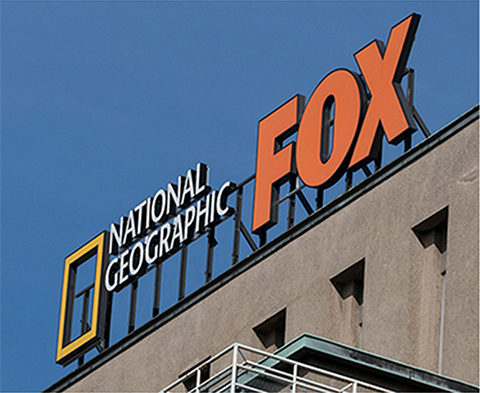 Twenty-five years ago this month, I was working for the National Geographic Society (NGS) developing the prototype for a digital photographic archive for the Society’s Image Collection. It was incurring significant expenses and the President of NGS asked me to develop a business plan to justify the costs. This blog consists of portions of the document that I submitted.
Twenty-five years ago this month, I was working for the National Geographic Society (NGS) developing the prototype for a digital photographic archive for the Society’s Image Collection. It was incurring significant expenses and the President of NGS asked me to develop a business plan to justify the costs. This blog consists of portions of the document that I submitted.
In 2015, National Geographic sold their magazines, maps, books and other media assets to 21 Century Fox for 725 million dollars. As the Washington Post reported at the time, “Like many print publications, National Geographic has been hurt by the onset of the digital era, which has put it on a slow trajectory toward extinction.” In 2018, Fox sold the National Geographic holdings, among others, to Disney for 52 billion dollars.
To make this document shorter and more relevant, I have eliminated most of the Cost/Saving paragraphs of the Business Plan. I did include them in Phase 4, Phase 11 and Phase 20 to give readers an idea of the thought behind each phase. Also, for clarification I have included comments (in italics) that were not part of the original document.
As a point of reference, the World Wide Web was two years old in 1995.
Business plan for the Digital Image Archive
May 31, 1995
The following is a compilation of the costs and savings involved in designing and implementing a digital archive for the National Geographic Society. If this archive is considered to be the centerpiece of a business that will capture information digitally, work in a digital environment, and distribute content digitally, then we must not think of it only as a system that will streamline our existing archive. We must instead reexamine the core process to determine what will be necessary in a digital world, and what will be irrelevant. Only then can we begin to understand the real benefits and savings of building such an archive.
This plan organizes the growth of a digital National Geographic Society into phases. Management direction is needed for these phases to become enterprise-wide objectives.
Listed below, they are projected over a time period of several years. Assumptions are made about emerging technology, corporate and consumer behavior, new markets, etc. These, as well as the chronology of the phases, will change. This document is only one person’s view of how the Society might respond to the digital world. Perhaps it is a starting point for a discussion concerning the reorganization of our business to take full advantage of digital.
Phase 1
Development of prototype photographic digital archive
(Note: Underway at the time.)
Phase 2
Establishment of the NGS digital archive
(Note: Image Collection server on line in 1996, Full IBM digital archive in 2003)
Phase 3
Rights to NGS-produced materials secured
(Note: This would entail developing a robust rights management system)
Phase 4
Establishment of NGS on-line services (Web site)
(Note: nationalgeographic.com launched in 1997)
Costs Web server and related charges personnel needed to maintain web, editorial team needed for electronic products, marketing unit required, TCP/IP and network charges, database management.
Savings Distribution of some paper products eliminated, postage costs down, tracking of customers possible, content can be scalable, interactive commodity-based pricing, print product manufacturing positions eliminated.
Phase 5
Research and Exploration Journal on-line as first electronic publication
(Note: This publication was a juried scholarly journal. It folded because of costs with no thought of a digital version.)
Phase 6
Still images from TV, books, World and Traveler added to digital archive
(Note: National Geographic domestic TV channel launched in 2001!)
Phase 7
Photo editing for print products becomes partially digital, using scanned analog material
Phase 8
Manufacturing of print products becomes totally digital
(Note: Meaning digital design, production and plate-making before the analog press run)
Phase 9
Digital cartography database of globe completed
(Note: At the time, a prototype was being developed.)
Phase 10
Linking cartography database to digital archive
(Note: Never implemented. Think Google Maps.)
Phase 11
Expansion of the on-line bandwidth. Wireless capability appears
Costs Media server requirements, object-oriented data bases necessary, project teams need the ability to edit on the fly, editorial effort increases, video editing and production personnel required.
Savings Consumers begin to look to on-line as a primary source of information, interactivity is commonplace, consumers will rely on NGS as geography lynchpin, more NGS products on-line.
Phase 12
Marketing and billing databases are directly linked to products and services and to the transactional database in the digital archive
Phase 13
Geographic educational materials and products are produced, distributed, and billed digitally
Phase 14
Replacement of film cameras with digital cameras
Phase 15
Photo editing becomes completely digital
Phase 16
Digital environment for video
(Note: Digital video cameras need massive bandwidth to enable complete digital capture.)
Phase 17
Interactive television
(Note: Think Zoom)
Phase 18
Links from digital video archive to other NGS digital archives
Phase 19
Remote digital video studios established
(Note: Think YouTube, Snapchat, TikTok, etc,)
Phase 20
Mobile interactive digital tools become commonplace
Costs Quest to upgrade of the quality of “instant” content, addition of intelligent editing tools to economize capture techniques and entertainment needs.
Savings Customers use personal digital assistants (apps) to receive most of their daily information and supply instant, accurate information about all facets of our planet. NGS establishes deep loyalty with customers based on content, attentiveness and astute marketing.
